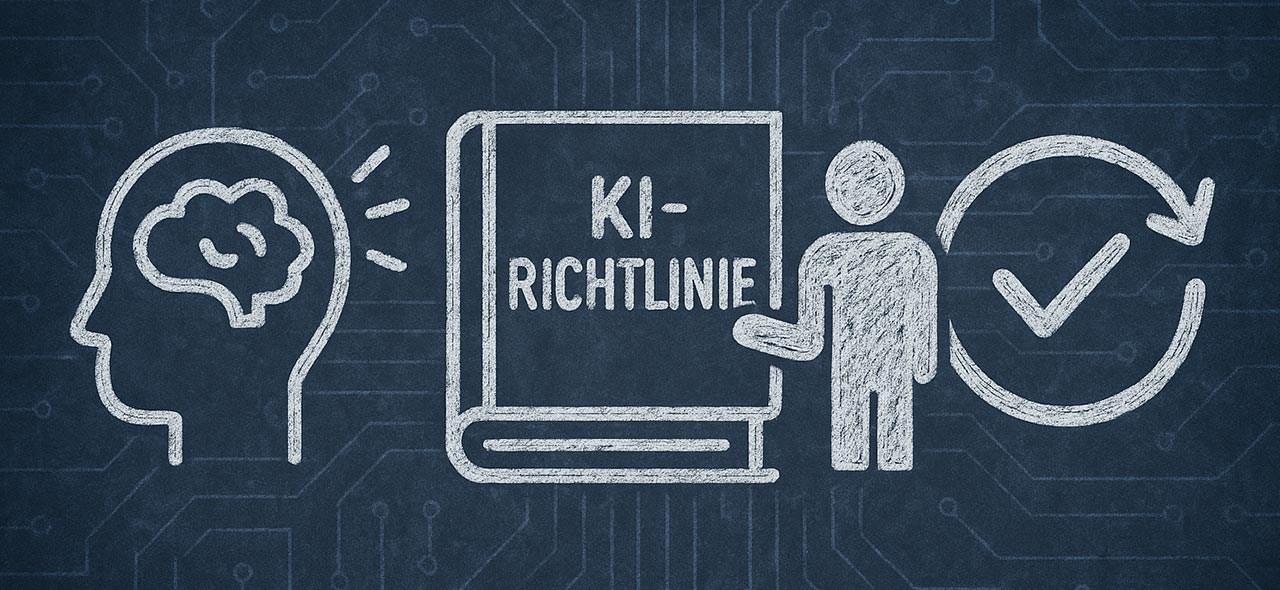secopan newsletter – June 2025
Use of AI Systems
“Artificial intelligence is probably the best or the worst thing that could happen to humanity.”
This quote comes from Stephen Hawking, who already in 2017 warned us about the consequences of losing control over intelligent machines. AI has the potential to optimize business processes and provide innovative solutions. However, to use AI responsibly and in a controlled manner, a clear structure is required even before implementation.
Dear clients,
In today’s newsletter, we focus on artificial intelligence (AI) – a technology field that offers enormous benefits for our economy and society, is evolving rapidly, and is already being applied in many areas: in programming, marketing, text creation, or image generation.
Precisely because the possibilities are so diverse, a structured and secure approach to AI systems – such as ChatGPT, Copilot, or other LLMs – is essential. We want to provide you with a valuable guide to ensure that you can use AI safely and, above all, in a controlled way.
To avoid misunderstandings, let us briefly explain a few terms:
- A AI system is a machine system that works independently – i.e., to varying degrees autonomously. It processes inputs (e.g., text, numbers, images) and produces outputs such as predictions, suggestions, content, or decisions, which can affect real or digital environments.
- Provider or manufacturer is the company that develops or offers an AI system, e.g., OpenAI.
- Operator refers to organizations (companies or authorities) that use or deploy AI systems like ChatGPT.
The terms can be reviewed here: https://ai-act-law.eu/de/artikel/3/
We recommend planning the use of AI in the following steps:

Step 1: Brainstorming
Before deploying an AI system, the following questions should be clearly clarified:
- What exactly should the AI do? (Purpose)
- In which process or work area will it be used?
- Which data will be used – and how is it classified? (internal, confidential, or public). Will any personal data be processed by the AI?
- What opportunities does the deployment offer – and what risks exist?
Tip: Conduct a short survey or idea collection across different departments. The results will help plan the AI deployment effectively and develop aligned measures, responsibilities, and guidelines.
Important: Using AI on company devices without planning, rules, and agreed guidelines is generally prohibited.
Step 2: Regulation and Training
Once the application area and the provider are defined, the next step should be to establish clear guidelines and provide appropriate awareness training. Implement a clear AI policy in your organization to ensure that everyone uses AI correctly.
We can assist you with this – get in touch!
Step 3: Continuous Improvement and Monitoring
Defining the purpose and rules is just the beginning. The real challenge is keeping up with the continuous evolution of AI. AI technologies develop at a rapid pace, and AI systems will adapt and “learn” over time based on new inputs.
Therefore, using AI is always part of a continuous improvement process.
This means:
- Regularly reviewing use cases
- Keeping an eye on new risks and features
- Dynamically adjusting security requirements
For any questions or support regarding the implementation of AI systems, we are happy to assist you.
